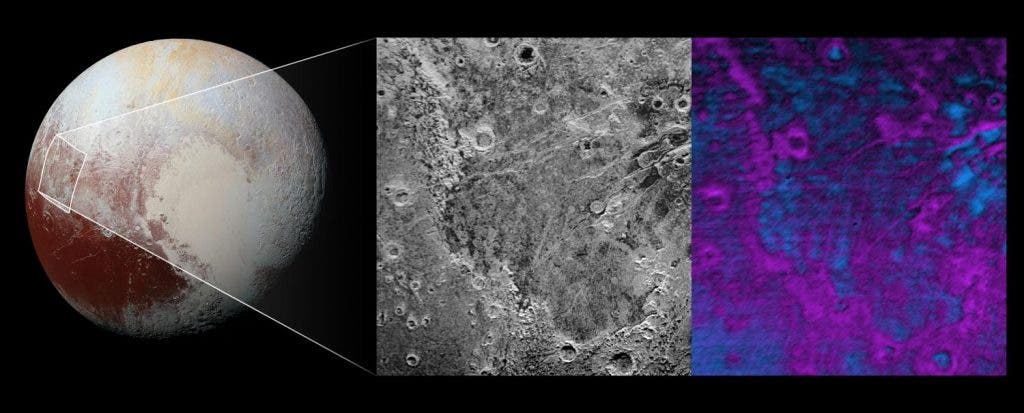Close to the dwarf planet’s equator liies a roughly 4,000 square miles plateau called Piri Planitia, which particularly stands out. Unlike the rest of Pluto, the plateau is pretty smooth, unmarked by the characteristic craters and jagged. Aided by New Horizons’ sensitive imaging instruments, scientists now think they know what’s been eating Pluto so long: sublimation at the hand of methane-rich deposits.

Piri Planitia is bordered by cliffs that break up into isolated mesas. Compositional data from New Horizons’s Ralph/Linear Etalon Imaging Spectral Array (LEISA) instrument indicate that south of a jagged scarp called Piri Rupes lie uplands rich in methane ice (coloured as purple). Sublimation (instant phase change from solid to gas) of methane may be causing material to erode along the cliffs’ faces, forcing them to retreat south leaving Piri Planitia plains in their wake.
The barren plateau seems to also have more water ice (coloured as blue) than the higher plateaus, indicating Piri Planitia surface if made of water bedrock right beneath the retreating methane ice.
The images were performed by New Horizons during a operation of approximately 33,900 kms from Pluto, about 45 mins before a spacecraft’s closest proceed to Pluto on Jul 14, 2015.
Was this helpful?



